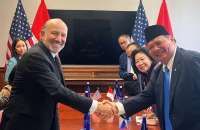TAX - JAKARTA. The government's efforts to reduce the number of smokers in Indonesia are hampered by the tobacco excise tariff policies that are contradictory with public health. One of them is the complicated tobacco excise tariff structure that makes cigarettes remain affordable. As a consequence, the smoking prevalence in Indonesia remains high and keeps increasing every year.
Policy Director of Center for Indonesia’s Strategic Development Initiatives (CISDI) Olivia Herlinda said that simplification of cigarette excise tariff structure should be carried out as soon as possible. Simplification becomes relevant amidst the COVID-19 pandemic, where the country needs a higher budget for the national economic recovery program.
“Simplification of the cigarette excise tariff structure in a gradual manner will reduce the variance of cigarette pricing in the market, especially the ones which are still too cheap. This is to make smokers could not easily switch to cheaper cigarettes whenever cigarette price is increased, because the type of cigarette products are not as varied,” said Olivia.
Read Also: Indonesia reports record 15,308 new coronavirus infections
CISDI hoped that the cigarette excise tariff structure simplification roadmap that once implemented by the government in 2018 could be implemented once again gradually. Furthermore, simplification has also been mandated to the National Medium Term Development Plan (RPJMN) 2020-2024.
“This year is the year for the government to conduct simplification. Aside from controlling consumption, simplification of the excise tariff structure groups will also increase state revenue from excise tariffs that would be needed for economic recovery,” she explained.
Olivia also said that the complicated excise tariff structure will create tax avoidance opportunities for the giant cigarette manufacturers by paying cheaper excise tariffs.
“The complicated excise tariff structure also makes it difficult for Customs and Excise to carry out monitoring. In addition, the complicated excise tariff structure also allows giant cigarette manufacturers to create product segmentation with different brands with the production volume that is adjusted to the lower tier production limit. This, in turn, will cause small-scale cigarette manufacturers to collapse,” said Olivia.
Head of Social Security Research Center of University of Indonesia (PKJS-UI) Aryana Satrya echoed Olivia's statement, saying that the target of reducing smoking prevalence in Indonesia has not been optimized because the policies to control cigarette consumption have not been carried out consistently, significantly, and synergistically.
/2020/11/01/1117655802p.jpg)









